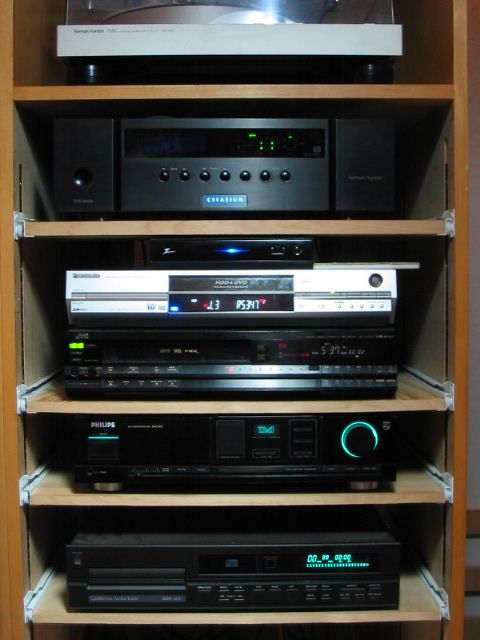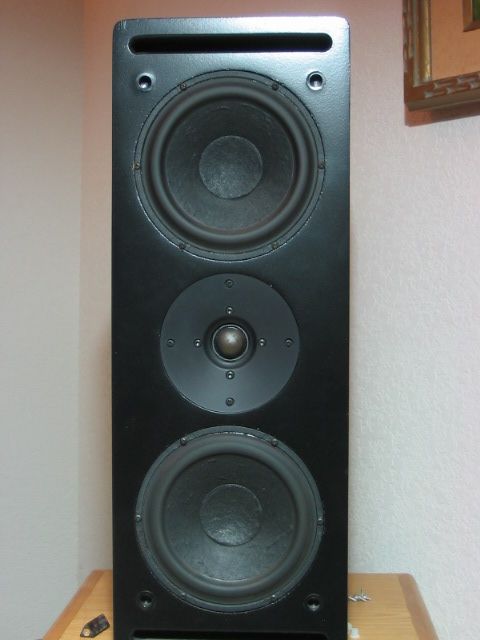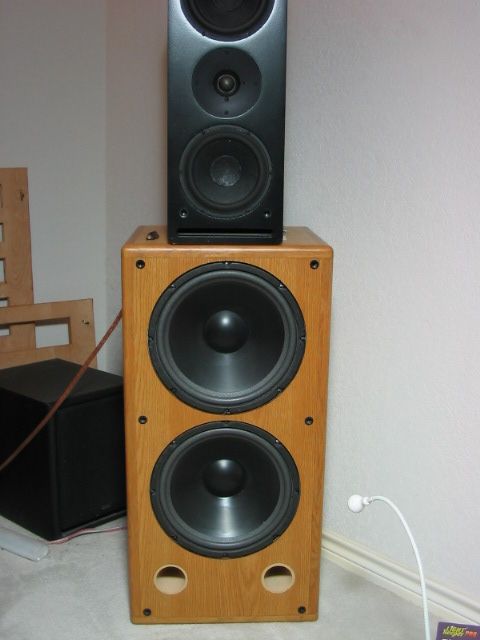Update XVI
The Citation 7 has performed flawlessly since last post. It remembers the custom programming, even though I completely power it down, even over several days. No reprogramming necessary.
I've since rearranged the equipment rack to move all the source components to the same side to minimize wiring runs and cable tangles. I've also removed the FM tuner, laserdisc player and cheap DVD player as I'm now using the DVD recorder/player for that function. The cheapie is out in the garage playing CD's.
I have each component on sliding panels to ease rear access and wiring. Originally, I had a solid front that covered all except the face of each component. Unfortunately, it didn't work near as well as I envisioned. It did look nice though. Of course, changing any component meant cutting a completely new panel. Major PITA.
Another Phoenix project will be the CAL Icon Mk II CD player shown at the bottom. It powers up, accepts a disk and ticks off the time played, but no sound. Something's Tango Uniform inside and needs excavation to find the cause. Great player though.
For those curious about the loudspeakers:
I'm currently using this MTM array employing all Scan-Speak drivers. Sounds very detailed, yet very smooth. The upper slot is a vent as this is a bass-reflex (4th order) design and there's another at the bottom. Nice idea, but not necessarily with a large Xmax driver like the SS woofer as they can 'chuff'. These just sound phenomenal though..they just disappear meaning you don't associate the sound as emerging from the LS at all. It's almost as if you could remove them and the sound would still be there.
Bass is being handled by this pair of 10's in a bass-reflex cabinet, powered by a separate amplifier. Currently I'm using the Citation's low-pass internal filter @ 85Hz to split the signal between the two LS as it keeps bass out of the remaining speakers as well.
Previously I used a custom filter designed for the bass cabinets that resulted in a 6th-order alignment for better extension and control as well as independant volume control. I can tell the difference and may change it back. The Citation 7 does allow some limited contouring of the bass response though which is nice. The other side is a similar configuration. Having four 10" drivers handling everything from 85Hz and down results in effortless bass.
When the day comes I replace the old 36" JVC, I'll have to rebuild this whole cabinet to hold a larger set. This one has served me well for 23yrs and I learned a lot about woodworking when I built it.
I'll have to warm up the oscilloscope and dig deeper into the TU status of the CAL player. Stay tuned....









